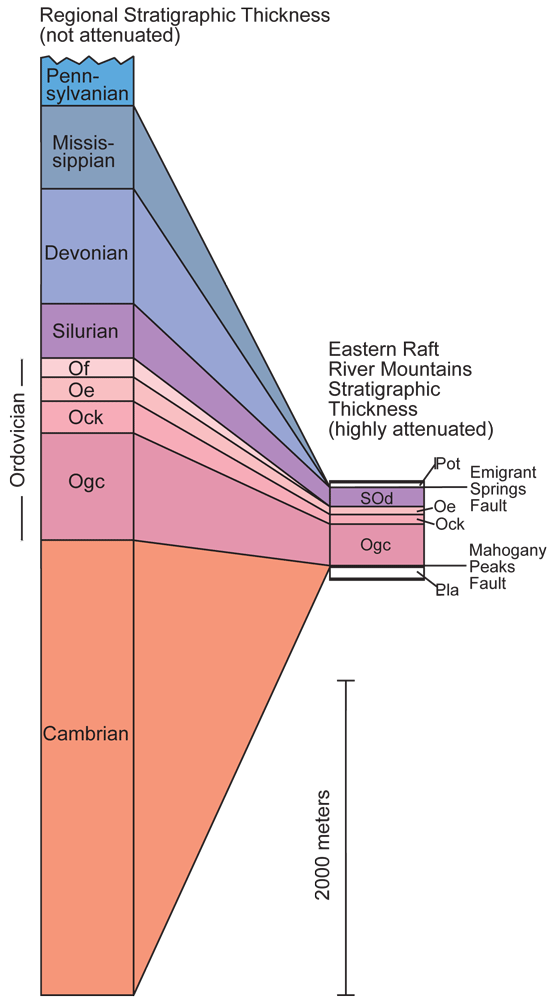What is a Metamorphic Core Complex?
The Albion (Idaho), Grouse Creek, and Raft River Mountains host one of the major metamorphic core complexes in the western U.S. A metamorphic core complex is an area from a few miles to over 50 miles across characterized by a core of highgrade metamorphic rock, several miles of vertical uplift, and capping “shells” of highly sheared, attenuated, and variably metamorphosed sedimentary rock. They are common in areas of localized extension within otherwise thickened hinterlands of fold/thrust belts.
Crustal extension (probably driven by temperature differences in the earth’s upper mantle) leads to the rise of a deeply buried welt of hot rock and magma. The resultant doming leads to gravitational collapse on low-angle faults, causing overlying rock to shear and metamorphose, separate into distinctive structural zones (somewhat like layers of an onion), and thin down to a few percent of its original thickness (making it nearly unrecognizable).
Rocks at the surface commonly slide away from the uplift. The Albion/Raft River/Grouse Creek metamorphic core complex has evidence of over 10 miles of vertical uplift that occurred in episodic pulses over about 100 million years of geologic time. Each pulse produced a unique structural fabric that overprinted each previous fabric.
Through careful field mapping and research over the past few decades, geologists have painstakingly teased this story out of the rock record. We are fortunate to have one of these geologists, Mike Wells, structural geologist at UNLV, on the Grouse Creek mapping team.
Survey Notes, v. 44 no. 1, January 2012



